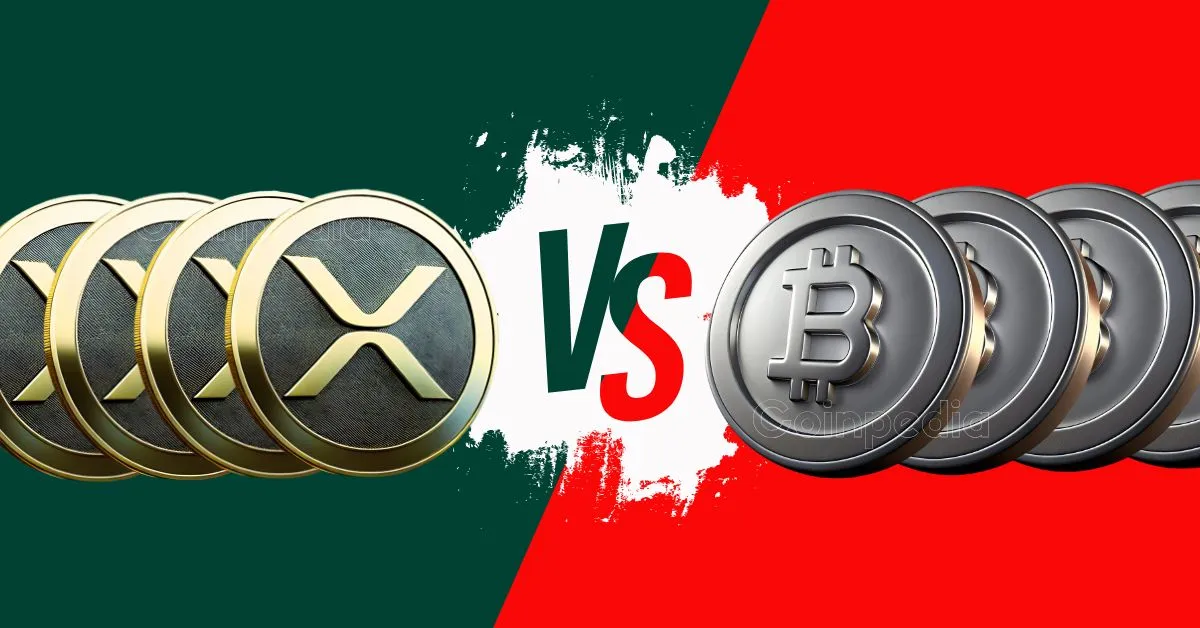
A newly surfaced document shared by XRP community member SMOQE has caught the crypto world by surprise – suggesting that Ripple’s roots go all the way back to 2004, four years before Bitcoin was created.
The document includes a 2014 email exchange between several industry insiders, including tech journalist Reutzel Bailey. In it, Bailey points out that Ripple’s concept existed even before Satoshi Nakamoto published the Bitcoin whitepaper in 2008, raising new questions about who really started the digital finance revolution.
According to Bailey, it was Ryan Fugger who first came up with Ripple in 2004. He created a platform called RipplePay to let people move value peer-to-peer, without relying on banks.
However, it was Chris Larsen, now Ripple’s co-founder, who later took the project to the next level. Bailey believes Larsen tapped into the growing hype around Bitcoin to reframe Ripple as a cryptocurrency.
“Larsen pushed this [Ripple] as a cryptocurrency to catch attention because the platform itself was not really about cryptocurrency at all,” Bailey said.
The email conversation also dismantles claims that Ripple mimicked Bitcoin. Industry voice Jeffrey Cliff firmly stated, “Ripple predates Bitcoin,” countering concepts of Ripple as a “copycat math-based currency.”
Furthermore, Ripple’s concept emerged in 2004, and its cryptocurrency, XRP, was launched in 2012, which was four years after Bitcoin’s 2008 debut. This timeline firms Bitcoin as the first cryptocurrency, even as Ripple claims an earlier ideological spark.
In 2011, developers Jed McCaleb, Arthur Britto, and David Schwartz began building the XRP Ledger (XRPL). They aimed to create something more efficient than Bitcoin, especially by avoiding its energy-heavy proof-of-work system.
McCaleb reached out to Fugger and convinced him to turn RipplePay into a crypto network. That led to the creation of NewCoin in 2012, which was soon renamed OpenCoin, and later simply Ripple.
The XRPL creators gave 80 billion XRP to Ripple. McCaleb personally received 9.5 billion XRP, which he sold off gradually – completing his exit in 2022. After leaving Ripple, he went on to co-found Stellar. Meanwhile, Chris Larsen stayed on and still serves as Ripple’s chairman today.
While Bitcoin may hold the title of the first true cryptocurrency, Ripple’s earlier origins show that the idea of decentralized value transfer was already taking shape years before.
Today, as Ripple continues to innovate in cross-border payments, this rediscovered history adds depth to its role in the crypto world, reminding us that Ripple wasn’t just another Bitcoin competitor, but possibly one of the first to imagine a world beyond banks.
Yes, a newly surfaced document suggests Ripple’s foundational concept, RipplePay (a peer-to-peer value transfer platform by Ryan Fugger), was created in 2004, four years before Bitcoin’s whitepaper in 2008.
Ryan Fugger first conceptualized Ripple in 2004, creating RipplePay as a platform for direct peer-to-peer value transfers, aiming to bypass traditional banks.
Bitcoin debuted in 2008, while XRP, the cryptocurrency tied to the XRP Ledger, was launched in 2012, making Bitcoin the first true cryptocurrency, despite Ripple’s earlier conceptual roots.
In 2011, Jed McCaleb, Arthur Britto, and David Schwartz built the XRP Ledger (XRPL) to be more efficient than Bitcoin. McCaleb convinced Fugger to transform RipplePay into a crypto network, leading to NewCoin (later OpenCoin/Ripple) and XRP in 2012.
CoinPedia has been delivering accurate and timely cryptocurrency and blockchain updates since 2017. All content is created by our expert panel of analysts and journalists, following strict Editorial Guidelines based on E-E-A-T (Experience, Expertise, Authoritativeness, Trustworthiness). Every article is fact-checked against reputable sources to ensure accuracy, transparency, and reliability. Our review policy guarantees unbiased evaluations when recommending exchanges, platforms, or tools. We strive to provide timely updates about everything crypto & blockchain, right from startups to industry majors.
All opinions and insights shared represent the author's own views on current market conditions. Please do your own research before making investment decisions. Neither the writer nor the publication assumes responsibility for your financial choices.
Sponsored content and affiliate links may appear on our site. Advertisements are marked clearly, and our editorial content remains entirely independent from our ad partners.
For years, crypto investors have relied on one idea more than almost any other: the…
XRP is back in focus after a fresh signal appeared on the weekly chart. The…
Taiwan has joined the growing list of governments holding Bitcoin, not as an investment strategy…
YoungHoon Kim, the world’s highest IQ holder, predicts XRP could flip Ethereum by 2026, even…
Kraken is launching its xStocks product on the TON blockchain, now available through Telegram’s TON…
The US Consumer Price Index (CPI) for November will be released today at 8:30 AM ET,…